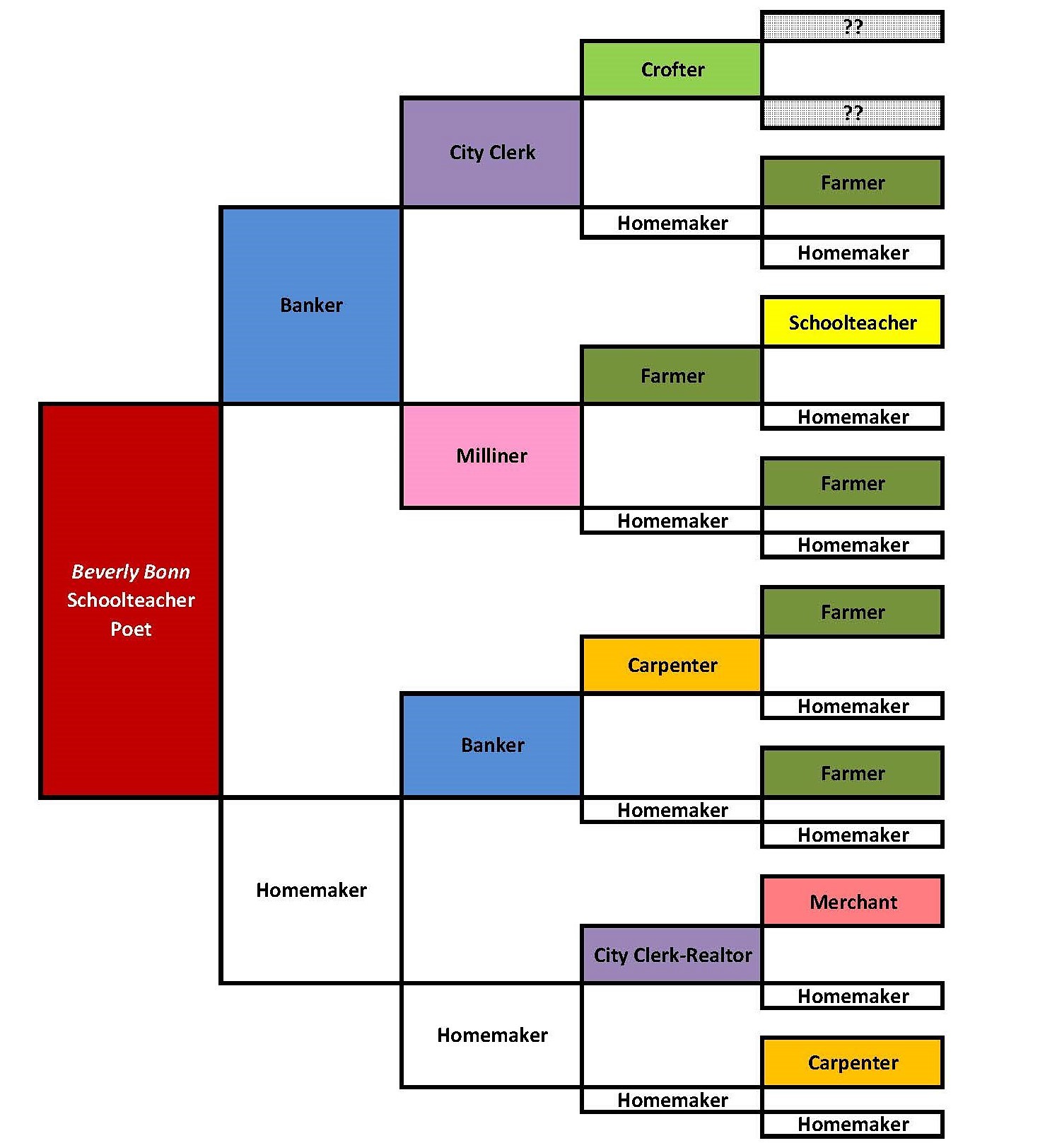My Civil War Ancestors
In recent posts, I’ve been in an analysis rather than research mode. First came a summary of ten years of discoveries and breakthroughs. (Read here.) Then I posted a series of three articles about the occupations of my ancestors. (Read here, here, and here.) At some point, I also plan to analyze my ancestors by religion, country of birth, and age at death.
Today let’s focus on military service. Although I have no professional soldiers or officers in the last 6 or 7 generations, many male ancestors served America during wartime.
My father served in the the Pacific Theatre for the U.S. Navy in 1944 and 1945. He was a sonar man on the USS PC-620, a patrol craft stationed at Pearl Harbor. I remember him saying that his ship towed targets out for the submarines to practice torpedo shooting. Unlike his older brother, who was wounded at the Battle of the Bulge, Dad never saw the enemy and never experienced combat – one of the great regrets of his life.
My grandfather Lloyd Jonnes (1890-1952) was a Lieutenant in the Navy Reserves during World War I and served as a medical officer in Norfolk, Virginia for a few months. I should order his military file to check on the details. My other grandfather, Bertram Bonn, (1902-1964) was too young for World War I and too old for World War II.
As best I can tell, none of my four great-grandfathers ever put on a uniform.
The Civil War (1861-1865), however, coincided with the generation of my second great-grandfathers (2GGs). Of my eight male 2GGs, two were Union soldiers:
- Wesley Blalock (1825-1895) – Private, 31st Illinois Infantry Regiment
- Leonidas Lukemire (1843-1928) – Private, 59th Ohio Infantry Regiment
Wesley and Leonidas were the grandfathers of my paternal grandmother Barbara Lukemire (1899-1974), so only my father has Civil War ancestors, not my mother. There are good explanations why the other six 2GGs did not serve in the Civil War:
- Nelson E. Jones (1821-1901) – Physician in his 40s
- Samuel H. McMullin (1831-1892) – Clergyman in his 30s
- Ole Larsen Bønsmoen (1820-1902) – Norway
- Petter Pettersen Aaberge (1835-1905) – Norway
- John K. Vermilyea (1851-1925) – Too young
- Fred A. King (1857-1920) – Too young
My Dad spent considerable time in the 1980s and 1990s researching Wesley and Leonidas’s service. His interest in genealogy was motivated considerably by a desire to explore the military background of his ancestors. He was an avid military history buff and knew the Civil War extremely well. He could have taught a course on it.
Both Wesley Blalock and Leonidas Lukemire volunteered early in the war in response to Congress’s call in July 1861 for 500,000 men to enlist for three years. (The first Union call for troops were 90-day men, but after the debacle at First Manassas, President Lincoln and Congress realized the war was going to last longer.) Wesley enlisted on 10 August 1861 in Centralia, Illinois, and joined Company K of the 31st Illinois Infantry Regiment. Leonidas – called Lon – enlisted on 18 October 1861 in Ripley, Ohio, and joined Company E of the 59th Ohio Infantry Regiment.
Both men served in the Western Theatre. Wesley served under Gen. Ulysses S. Grant along the Mississippi, Tennessee, and Cumberland rivers.
Leonidas originally served in the Army of Ohio under Gen. Don Carlos Buell, subsequently renamed the Army of the Cumberland led by Maj. Gen. William S. Rosencranz. After Rosencranz lost the Battle of Chickamauga in September 1963, Gen. U. S. Grant replaced him with Maj. Gen. George H. Thomas. By that point, however, the Army of the Cumberland was part of an army group led by Grant himself. So both ancestors had field experience under Grant. When President Lincoln promoted Grant to General-in-Chief of the Army in March 1864, Maj. Gen. William T. Sherman assumed command of all the western armies. The Army of the Cumberland participated in the Atlanta Campaign under Sherman, but did not join the March to the Sea. Instead, Thomas’s army was detached in order to pursue Confederate forces under Gen. John B. Hood into Tennessee.
The war physically impaired both men for the rest of their lives: Wes because of a gunshot wound and Leonidas because of illness. Wesley served less than a year because he was shot in the left knee during the Battle of Fort Donelson. He was discharged from a Union hospital in Cincinnati on 25 July 1862.
Lon served his entire three-year term and was discharged on 1 November 1864. His combat time was limited, however. He was in line at the Battle of Shiloh but came down with lung fever (pneumonia) and associated ailments and never fully recovered. Although the 59th Ohio saw action in many battles, Lon was usually posted to a convalescent camp. During the odd times he returned to his unit, he often stayed in the ambulance wagon.
In the late 1980s, my father became terribly excited when he discovered that Lon was wounded at the Battle of New Hope Church in May 1864. I went to the Archives and learned that Lon was actually lying in the ambulance wagon when a stray bullet grazed his right shoulder. Dad never talked about Leonidas much after that. I must admit to a certain insurrectionist glee at upending his fantasy. Sorry, Dad!

Western Theatre early in the Civil War, showing battles in which both Wesley Blalock and Lon Lukemire participated. (Source: Hal Jespersen, www.CWmaps.com: 2011)
I will follow with more detailed posts regarding Wes and Lon’s service.





